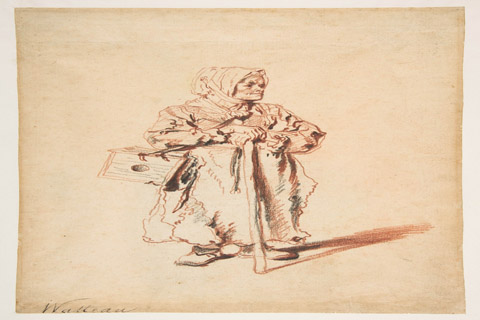A few months ago, I read the dense and absolutely fascinating book, "The Discovery of France" (with the additional title in the States of "A Historical Geography") by Professor Graham Robb of Oxford University. It is the most amazing work - the result of many years of research and some 14,000 miles cycled through France on his voyages of discovery. Graham Robb shows how the cohesive nation of today, "la belle France", was far from being either cohesive or civilised until very recently, really until the 19th century. Paris was an island of learning, culture and enterprise in a sea of very primitive, divided groups of people who had little concept of belonging to a nation and who, for the most part, did not even speak French until well after the French Revolution.
One of these groups, the Savoyards from Savoie, a beautiful area to the east of France, in the Alps region of Lake Geneva, had such trouble surviving in their inhospitable and highly taxed lands, that they would send their very young children to Paris for survival, of sorts. This had been going on for centuries, and these young children, virtually in servitude in many cases, would walk to Paris and there, they organised themselves into groups. They were especially famed as chimney sweeps because, being skinny small children, they could clamber up the narrow Parisian chimneys to clean them out.
Graham Robb tells a lot about these impoverished Savoyards, with their sense of solidarity, and their importance to their families back in Savoie to whom they would send money every year. Balzac and Victor Hugo wrote about the Savoyards, with their heroic attempts to survive, turning their hand to any job deemed unfit for others.
Standing Savoyarde with a Marmot Box, Antoine Watteau
Eventually, some 150 years ago, they progressed from chimney sweeping to another tightly knit category, the "collets rouges", the official porters at Hôtel Drouot, the most famous and oldest auction house in Paris. 110 porters, all Savoyards, have the right to transport, sort, store and carry all the auction items in the Drouot precincts. Recently, there have been some "irregularities" discovered and porters have been investigated for serious wrong-doing, something the French do not seem surprised about!
But the wonderful connecting of dots that happened again for me was when I was reading about the clearly fabulous exhibition currently on at the Royal Academy, London, of Jean Antoine Watteau's drawings. I had known that Watteau drew all sorts of contemporary scenes in Paris, not just the "fêtes galantes" of the Royal Court and 18th century French society. But I had forgotten about his drawings of the Savoyards. The Royal Academy exhibition apparently has eighty-eight drawings, divided into five themes, of which one deals with the Savoyards.
The Old Savoyard, red and black chalk with stumping, 1715, Antoine Watteau, (image courtesy of the Art Institute of Chicago)
The Old Savoyarde,, 1715, Antoine Watteau, red and black chalk (image courtesy of The Metropolitan Museum).
These two drawings of elderly Savoyards, impoverished and marked by hardship, date from 1715. The old lady carries a marmot box, for the Savoyards would train marmots and use them for street entertainment in their quest for survival. Watteau apparently executed about a dozen drawings of the Savoyards in total.
Only such a master draughtsman as Watteau could so vividly illustrate the dire straits of the Savoyards that Graham Robb describes.



